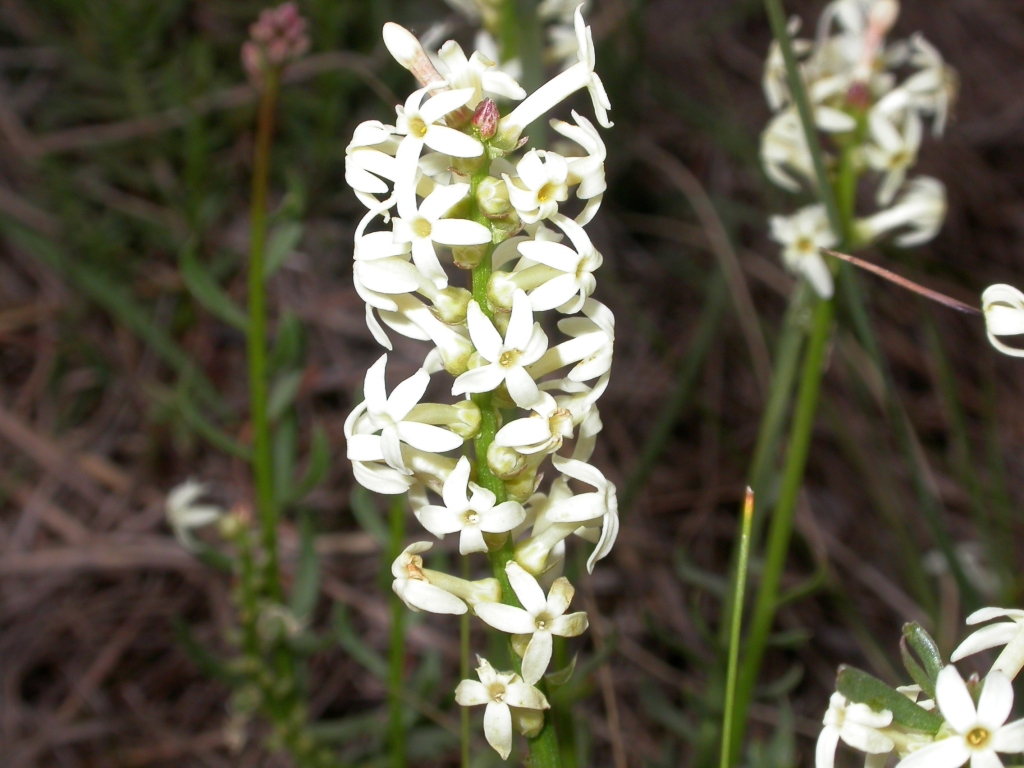Stackhousia subterranea
W.R.BarkerGlabrous perennial to 50 cm high, with 1–few, erect or ascending simple stems arising from nodes of often long, horizontal or ascending underground rhizomes, sometimes forming extensive colonies to 10 m diam. Leaves narrow-linear, lanceolate or obovate, 7–20(–35) mm long, 1–5 mm wide (at least the lower ones usually obovate and wider than c. 3 mm), obtuse to subacute, usually somewhat fleshy. Inflorescence a dense cylindric spike; flowers solitary at nodes, each subtended by a bract and 2 bracteoles (bracteoles hyaline, often vestigial), bract with a prominent saccate base, acute to acuminate, slightly shorter than to slightly longer than calyx. Hypanthium 0.5–1 mm long; sepals 1.1–2.1 mm long; corolla cream or white, tube 5–8 mm long, lobes 3.2–5.4 mm long; gynoecium 3(–4)-partite. Mericarps usually 3, broad-obovoid to broad-ellipsoid, 2–3 mm long, obtusely rugose to reticulate, the basal cavity shallow. Flowers Aug.–Nov.
LoM, MuM, Wim, VVP, VRiv, MuF, OtP, Gold, CVU, DunT, NIS. Occurs chiefly on fertile loam or clay soils in the western part of the State, in grassland or open woodland communities. Occasional in drier woodlands (sometimes mallee) on poorer soils (e.g. Terrick Terrick, Wyperfeld NP).
 Spinning
Spinning
